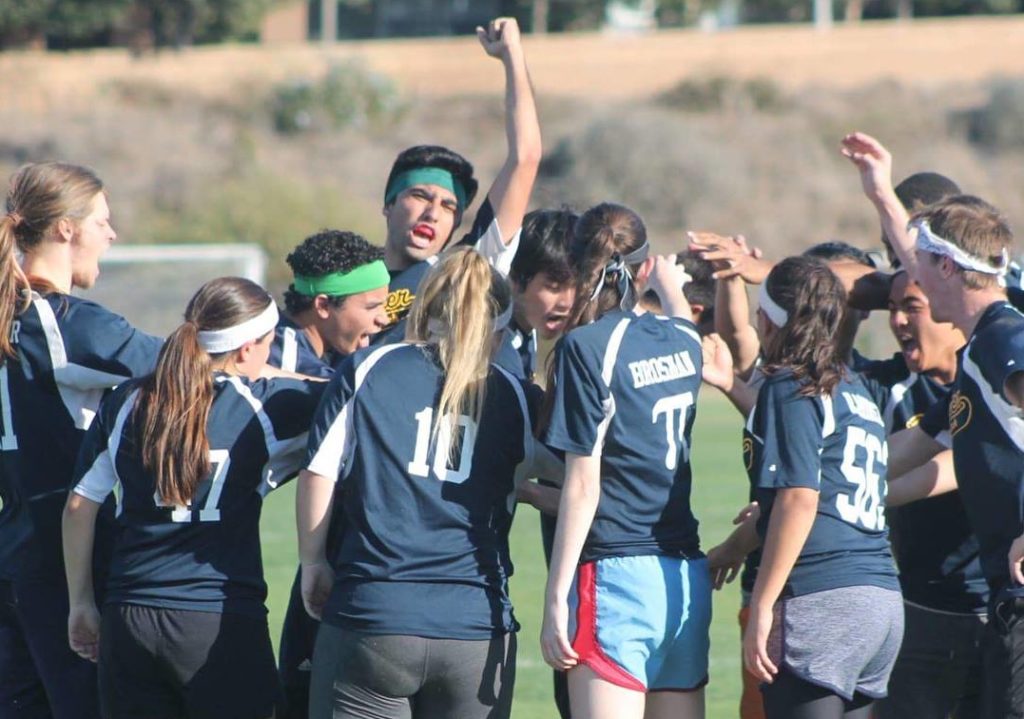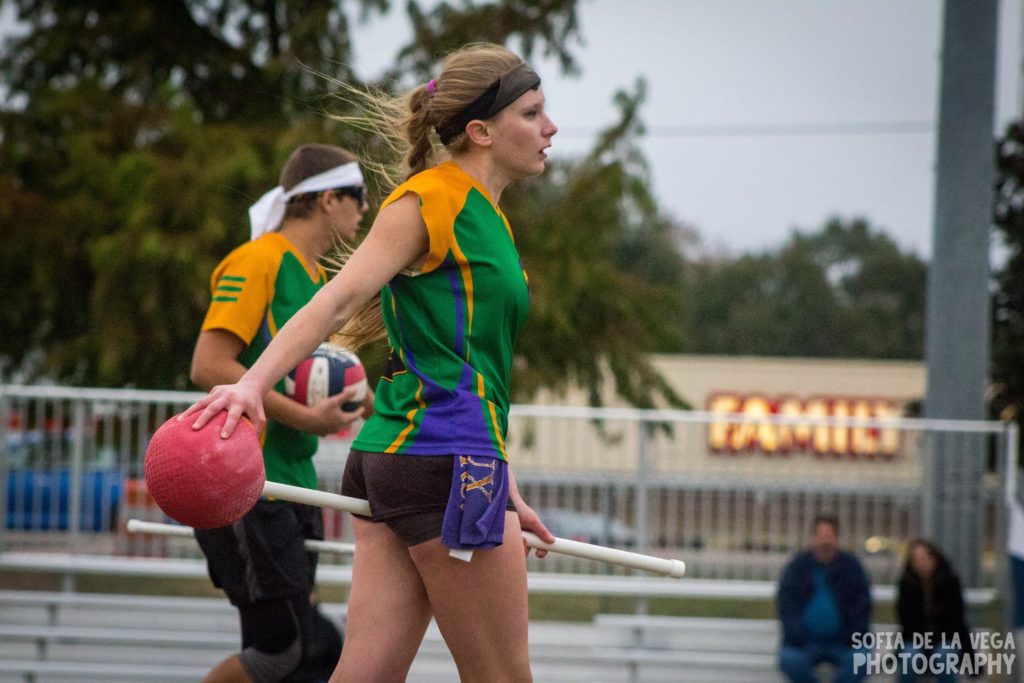Antwerp QC, Much of Belgian Core, Leaves Competitive Quidditch

Credit: Chris Rothery
In any sport, few scenarios are more compelling than an underdog coming out on top. Whether it’s the New York Giants stopping the New England Patriots from becoming the first team to go 19-0 in the NFL, a ragtag group of amateur hockey players defeating the well-oiled Russian machine in the 1980 Olympics’s “Miracle on Ice,” or a team of Australian quidditch players coming together to take down the previously unstoppable US National Team at the 2016 Global Games, any sports fan will have a potent image of the greatest upset they’ve ever witnessed. That said, it is difficult to compare the magnitudes of different upsets, especially ones across different sports and leagues. We may never be able to determine whether LSU’s upset of the Lost Boys in World Cup VII’s bracket play was more or less impressive than the New York Giants’ Super Bowl upset over the Patriots, but—using an objective tool like Elo ratings—we can at least compare upsets within quidditch.
The Elo rating system we use determines a team’s odds of winning (We) using the following formula:
We = 1 / (10(-Elo difference/400) + 1) [1]
What this means—in shorthand—is that the greater the difference in two teams Elo ratings, the greater the chance the favored team will win, increasing logarithmically. For example, a team rated 1500 will have roughly a 36 percent chance of beating a team rated 1600, and a 9 percent chance of beating a team rated 1900. By comparing the Elo difference of two teams before they play, we are then able to create a comprehensive list of the largest upsets in quidditch history and where they rank in that list.
For the purpose of this article, we are looking at upsets where the winning team had less than a 20 percent chance of winning, or in terms of Elo, were rated at least 241 points below the team they beat. Because every team that started in 2013 or later began with an Elo rating of 1300, only games that occurred after a team’s first 10 games were counted in this dataset. This is so that games played by new teams early in their season—such as Lone Star Quidditch Club over reigning-champion University of Texas—do not become over-represented in this listing.
Presented at the bottom of this article is a table that shows every USQ upset in quidditch since the fall of 2012 (the extent of our data).
There are a couple caveats to these tables. First, since every team began the 2012 season with a rating of 1500, games from that season are less likely to be included in this list, and if they are, the magnitude of their upset is likely slightly understated due to the condensation of the pack of teams for the majority of that season. Second, only the margin of Elo difference was looked at in determining the magnitude of the upset. While one team upsetting another by 90 points could certainly be more impressive than a team pulling off a 80*-70 upset, this list specifically only looks at how much a team defied the odds with their win, not their score.
Putting the “Anteater” in “Giant Defeater”
With five years of quidditch in Elo’s books, the largest quidditch upset to ever occur is last year’s UC Irvine—more commonly know as Anteater Quidditch—victory over the Lost Boys at the Anthill Funkdown Invitational, and it’s not even close. The 589-point difference in these two teams’ Elo ratings is over 100 points greater than the next largest upset—Clone Star Quidditch Club over University of Arkansas at the 2015 Southwest Regional Championship. That means that entering that game, the Anteaters had less than a 3.3 percent chance of defeating the Lost Boys. Equally surprising about this win was the margin that the Anteaters won this game: 100*-60, a margin of +10 quaffle points. This was a larger margin than the average of the Top 80 upsets in our dataset (+3.4QP) and a significantly larger margin than the average of the Top 30 upsets (-5.3QP).

Credit: Sofia de la Vega
The Elusive Bracket Upset
Of all 80 games on this list, a whopping five of them have occurred during bracket play at nationals. While that may initially seem like a small number, it’s shockingly large when you consider that national bracket play games make up roughly 2 percent of games played every year. This overrepresentation is even more surprising when you consider the fact that by requiring teams to win big games to get there, bracket play weeds out teams with lower Elo ratings, thus shrinking the range of potential upsets that could occur. For example, last year’s Gulf Coast Gumbeaux upset of the Los Angeles Gambits in the first round of bracket play may have seemed large, with the 22nd ranked team defeating the fifth ranked team. However, to even make bracket play, Gumbeaux’s rating was high enough to put them only 206 points below the Gambits. Still an upset, but not one large enough to make this table.
Of these bracket play upsets, those of the BosNYan Bearsharks from the 2017 nationals especially stand out. Their upsets of Lone Star Quidditch Club and Quidditch Club Boston are the only upsets in this margin to ever occur after the first round of bracket play (not including play-in games). The rarity of these late round upsets makes sense, to a degree. At each tier of the bracket, lower-rated teams tend to be removed, leaving a group of teams with a more tightly-packed range of Elos—diminishing the likelihood of a matchup between two teams whose Elos are far enough apart to fall within this dataset.
BosNYan’s upset over Lone Star is also historic in another way. Their 160*-80 scoreline is the third largest win margin in the Top 80 upsets, and one of only 10 that was out of range. Despite their two upsets only differing in their Elo margins by four points, the disparity in the scores shows how truly impressive BosNYan’s game against Lone Star was.
Predictably Unpredictable Teams
When you look at these tables, two teams separate themselves from the rest. Illinois State easily separates themselves from the pack as the team with the most upsets in their favor, with six. Conversely, University of Miami finds themselves on the losing end of this list seven times, more than any other team by far. What puts these teams on these lists? Is it luck or some other factor?
These teams’ idiosyncratic “luck” becomes more evident when you look at the win/loss patterns of each of them. Illinois State has 64 losses in their program’s history, 47 of which (73 percent) came while they were out of snitch range (compared to 15/37 of their wins coming in snitch range). By consistently losing big and winning small, on average, Illinois State has been able to keep their Elo rating relatively low, while consistently proving that they are a team who is capable of consistently performing in big games.
Miami’s record is almost a mirror image. They have only 32 losses in program history, only 14 of which (44 percent) came while they were out of snitch range. Meanwhile, of their 67 wins, 51 of those (76 percent) occurred out of range. Miami has been able to win big and lose small, keeping their Elo consistently high, leaving them prone to close upsets. While it may be expected that the overinflation of South teams’ Elo ratings has been a major factor in Miami’s penchant for being upset, only three of their seven upsets on this list have come to out of region teams, and only one of those (their October 2014 upset by Loyola University – New Orleans) would be pushed off this list by an approximate 20 Elo point regional inflation adjustment. The fact that the majority of their large upsets have come to teams from the South shows that other factors are at play.
While looking at win margins can indicate why these teams seem to be overrepresented on either side of this list, the major factor for either of these teams is almost certainly random chance. In a dataset as large as this, with over 250 teams being tracked, there are bound to be outliers, even ones as extreme as Illinois State and Miami. While there may be specific factors that result in these teams being better able to upset or be upset (i.e. disparities in their seeker floor/snitch on pitch play), the fact that these two teams appear on the list with prevalence—and other teams do not—has a large amount of luck built in.
As we enter the 2017-18 season, it is unlikely that we see any upsets as large as the Anteaters’s takedown of the Lost Boys, and whether Miami or Illinois State can build on their records remains to be seen. If one thing is made certain by this list, however, it’s that big upsets are more likely than not to happen on any given weekend—so don’t be surprised if you happen to witness a historic one.
Archives by Month:
- April 2025
- May 2023
- April 2023
- April 2022
- January 2021
- October 2020
- September 2020
- July 2020
- May 2020
- April 2020
- March 2020
- February 2020
- January 2020
- December 2019
- November 2019
- October 2019
- August 2019
- April 2019
- March 2019
- February 2019
- January 2019
- November 2018
- October 2018
- September 2018
- August 2018
- July 2018
- June 2018
- April 2018
- March 2018
- February 2018
- January 2018
- November 2017
- October 2017
- July 2017
- June 2017
- May 2017
- April 2017
- March 2017
- February 2017
- January 2017
- December 2016
- November 2016
- October 2016
- September 2016
- August 2016
- July 2016
- June 2016
- May 2016
- April 2016
- March 2016
- February 2016
- January 2016
- December 2015
- November 2015
- October 2015
- September 2015
- August 2015
- July 2015
- June 2015
- May 2015
- April 2015
- March 2015
- February 2015
- January 2015
- December 2014
- November 2014
- October 2014
- September 2014
- August 2014
- July 2014
- May 2014
- April 2014
- March 2014
- February 2014
- January 2014
- November 2013
- October 2013
- September 2013
- August 2013
- July 2013
- June 2013
- May 2013
- April 2013
- March 2013
- February 2013
- January 2013
- December 2012
- November 2012
- October 2012
Archives by Subject:
- Categories
- Awards
- College/Community Split
- Column
- Community Teams
- Countdown to Columbia
- DIY
- Drills
- Elo Rankings
- Fantasy Fantasy Tournaments
- Game & Tournament Reports
- General
- History Of
- International
- IQA World Cup
- Major League Quidditch
- March Madness
- Matches of the Decade
- Monday Water Cooler
- News
- Positional Strategy
- Press Release
- Profiles
- Quidditch Australia
- Rankings Wrap-Up
- Referees
- Rock Hill Roll Call
- Rules and Policy
- Statistic
- Strategy
- Team Management
- Team USA
- The Pitch
- The Quidditch Lens
- Top 10 College
- Top 10 Community
- Top 20
- Uncategorized
- US Quarantine Cup
- US Quidditch Cup

